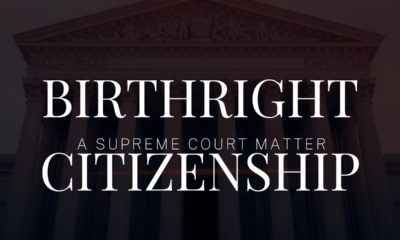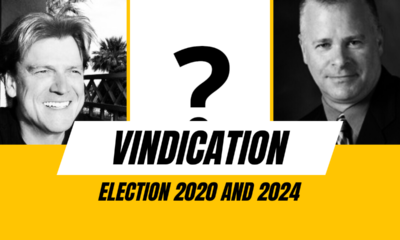Let's Talk
Polls and what affects them
Polls have many reasons to be less than predictive of elections, and are even less predictive today. Why? A primer.
Polls never stop running, even when elections are years away. That goes double for Presidential elections, as we have seen with Trump v. Biden polls. But conservatives and Republicans almost always outperform their polls in actual elections. Everybody knows that, yet legacy media outlets would as soon forget that. So they breathlessly report either a Democratic (“blue”) wave, or that a Republican (“red”) wave will not happen. Then the election produces the opposite result – and legacy media reporters and editors accuse the polls’ sample members of lying. What’s going on? Is anybody lying, and if so, who?
A polls glossary
First, some definitions. The sample of any poll consists of those whom the pollsters reached for comment. The population of any poll is the total of all persons living in an area, eligible to vote, registered to vote, or likely to vote. No one—ever—polls an entire population. You have to sample it.
The power of a poll is its ability to predict an election. Polling is like a branch of medical science called epidemiology, the study of disease outbreaks and diseases within a population. The larger the sample in relation to its population, the more powerful the poll will be.
The confidence level of any poll measures directly how likely the poll reflects reality. Most pollsters aim for ninety-five-percent confidence. Most medical researchers look at the opposite measure—how likely would the result have “just happened” to work out a certain way. If that likelihood is less than five percent, we say the result is statistically significant. (Why five percent? Because someone took a particular line from a copyrighted table and published it as a hard fact of nature. That line was the five-percent line.)
Statisticians—using methods going all the way back to the first noblemen who wanted Blaise Pascal to predict how often they could win at roulette at the Casino Royale in France—have all manner of models to address all these concepts.
Bias in polls
Polls can be and often are subject to bias. Bias is anything that would make the sample different from the population. To understand bias one must understand a few other concepts from probability theory.
Any event has a probability of falling out in a certain way—and any trial a probability of success. Say you want to select a candidate at random from among three candidates. You ask them all to toss “odd man out.” So each candidate tosses a coin. Three coins, with two faces on each, give you eight possible results. But those results consist of mirror pairs. (Two heads and a tail is the mirror image of two tails and a head.) The probability of any specific candidate winning selection is twenty-five percent. That represents any one candidate being just as likely to be the odd man out as any other, but also the probability that all three coins will land on the same face (heads or tails).
The Law of Averages tells you that, if you try this odd-man-out game often enough, every candidate will “win” the same number of times, and “ties” will happen as often as does a win for any specific candidate. But what if this does not happen? Then you know that at least one of the coins has an uneven weight – and is, therefore, loaded. That load is called bias. (It has another word, of course, that derives from nefarious human motive.)
Types of bias
Bias in polls comes from several sources. Self-selection bias results when certain subjects “make sure” to get into the sample. (Or when they take themselves out of the sample, one way or another.) Confirmation bias happens when the one running the poll is looking for the result he wants to see.
Whenever we see poll results, we like to believe in things that give us confidence that the poll will predict the election. They are:
- All members of the population, regardless of time of year, will “engage” the question with consistent strength throughout the year. Engagement includes not only thinking actively about a thing but also being willing, and having the time, to talk.
- No member will let anything influence his answer other than how he really thinks.
- The pollster has sampled all segments of the population equally. Or if not, then he has weighted the responses he got by the proportions of different segments that he sampled.
Unfortunately for pollsters and the general public, none of these assumptions is safe. Furthermore, any measurement of any kind, alters the thing one is measuring. The key is to measure something in a way that won’t alter that thing to a significant extent. In polling, that’s not always easy. And sometimes someone will run a poll, called a push poll, to influence deliberately the very thing they’re supposed to be measuring.
A history of self-selection bias
Self-selection bias has plagued polls since their beginnings. Conservatives select themselves out; liberals select themselves in. Conservatives have this thing called work they have to do. So often they aren’t at home when a pollster comes knocking on their door, or calling on the telephone. (And when they are at home, and know a pollster is calling, they hang up.)The leftist is at home – and ready to give the pollster an earful. That’s why polls skew left at baseline.
And even when conservatives are willing to talk, they won’t be thinking about the election in the summertime. They won’t start thinking about it until mid-September or October. Leftists factor politics into their every thought an act. Rightists do not—or most of us do not.
Why don’t pollsters adjust for that? The reputable ones do. But CNAV charges that Gallup, Harris, Marist, Quinnipiac University, and the legacy media polling operations are engaging in push polling to the near exclusion of any search for truth. No matter how many times they have to explain their lack of predictive value, they play the same game, every election cycle. If you want good polls, go to Trafalgar, Rasmussen, or maybe Zogby. (Any executive, dean, or editor who disputes this charge, may leave a comment.)
New reasons for bias
As CNAV said yesterday, Mr. Robert C. Cahaly of the Trafalgar Group suggested another reason for self-selection bias. If fanaticism drives leftists, fear now influences those on the right. The only reason this fear does not affect elections is that ballots are secret. Officers of election rigidly guarantee the privacy of all voters. (At least, this Officer of Election does that.)No polling operation is ever as secure. Even if it might be, conservative sample members have no confidence in that. So: do they lie? More likely they just don’t talk.
Today we see the most extreme example: the submerged voters.
They aren’t putting stickers on their cars, signs in their yards, posting their opinions, or even answering polls.
Of course not. After That Speech, who would? Never before has a President of the United States attacked actual voters. (Although Barack Obama came close, with his talk about people “clinging to God and guns.”) Presidents always reserve their attacks for their likely direct opponents or members of opposing (or “other”) Parties. But as Cahaly pointed out, this represents the latest in a series of escalations we have seen since Hillary Clinton.
Any hope for polls?
The only poll that matters is the election. Having said that, CNAV observes one thing that might lay the fear to rest. A parallel economy is rising, where workers are more comfortable expressing themselves at work. Further to this, a Great Sortation has been in progress for a long time and will likely accelerate. People not comfortable talking to their neighbors about politics are literally moving into communities where they do feel comfortable. Some are moving out for more important practical reasons: lack of opportunity, deteriorating infrastructure, poor schools, and ever increasingly, crime. Even leftists now have incentives to move. Governor Gavin Newsom (D-Calif.) now advertises his State as a sanctuary for abortion and “transgender transformation” (of minors!). As the leftists move in, the rightists will move out.
As the Great Sortation continues, and the parallel economy grows, those on the right will lose their fear. But those on the left will grow ever more fanatical – because they won’t have anyone on the right to argue with them. In that case, even push polling will fail, because people will make up their minds and keep like-minded company. Victory will go to the side that is reproducing – and we all know which side that is.
Terry A. Hurlbut has been a student of politics, philosophy, and science for more than 35 years. He is a graduate of Yale College and has served as a physician-level laboratory administrator in a 250-bed community hospital. He also is a serious student of the Bible, is conversant in its two primary original languages, and has followed the creation-science movement closely since 1993.
-
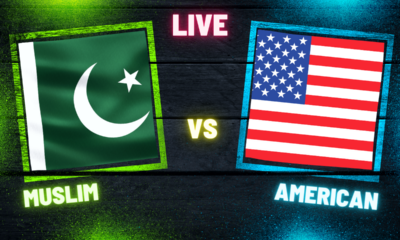
 Civilization4 days ago
Civilization4 days agoMuslima (Political Candidate) In Ohio: “I Might Have A Bomb-Gun,” On A School Bus Filled With Children – In America! (Video Resurfaces)
-
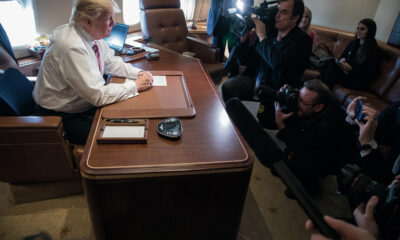
 Civilization2 days ago
Civilization2 days agoTrump’s Venezuela Gamble and America’s Shifting National Security Strategy
-

 Civilization2 days ago
Civilization2 days agoOperation Absolute Resolve: Anatomy of a Modern Decapitation Strike
-
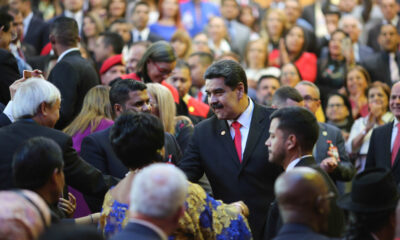
 Civilization2 days ago
Civilization2 days agoTen Reasons To Cheer the Arrest of Maduro
-
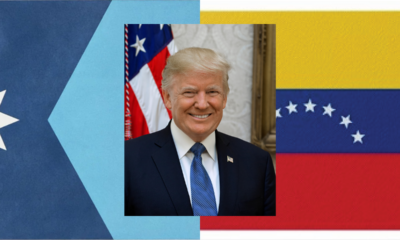
 Civilization3 days ago
Civilization3 days agoTrump delivers deeds, not words
-

 Civilization4 days ago
Civilization4 days agoVP Vance’s Splinter Problem
-

 Civilization2 days ago
Civilization2 days agoTrump’s New Executive Order on Space Has the Right Stuff
-

 Executive2 days ago
Executive2 days agoWaste of the Day: Federal Loans Potentially Had Conflicts of Interest









